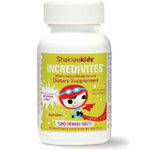When looking at a food product, the first two questions I ask are:
- What raw ingredients did the manufacturers start with?
- What processing has been done to morph the raw ingredients into this product?
Looking at Agave Nectar:
1. Agave Nectar comes from the juice extracted from several different species of agave plants. It is most often a product of Mexico. It has a low glycemic index and contains several minerals such as Calcium, Potassium and Magnesium. It is four times sweeter than honey and has a milder flavor. Sounds pretty good so far...
2. Once the juice has been extracted, it is heated so that the sugars are hydrolyzed. Keeping things simple, this just means that the long chain fructosans are converted to shorter fructose units. The processing increases the sweetness of the agave juice. Once it is hydrolyzed, the agave juice is filtered and then concentrated to form the Agave Nectar we see at the market. Unfortunately, the result of this processing is a sweetener that is very high in fructose - even more concentrated than High Fructose Corn Syrup in some cases. The concentration is dramatically higher than the fructose levels in whole fruits and fruit juices. Although the sweetener is low-glycemic, its effects resemble the negative health implications of High Fructose Corn Syrup.
The high concentration of fructose found in Agave Nectar is unlike any concentration found in nature. I don't think our bodies are designed to handle such rushes of sugar very frequently. Glycemic Index aside, this highly processed sweetener has the potential to wreak havoc on our pancreas and on our metabolism. While I don't think an occasional serving of Agave Nectar would wreck a body, the prolonged usage of this product might give us trouble.
Note: there is some variation in the processing. Some raw nectars have had their fructosans shortened using molds or bees instead of heat. Since there is not a definitive protocol for processing each brand, if you do chose to use Agave Nectar in moderation, call the manufacturer. Most reputable companies will provide you with processing information.
That's my two cents. We like to follow the principles outlined in What the Bible Says About Healthy Living... which leave us using sweeteners in their natural, unadulterated state. Did you know that Agave Plants were originally used only for making tequila? Before hydrolyzation, the juice wasn't sweet enough to be called a sweetener... sort of like maple syrup straight from the tree.

Mexico, Oaxaca, Field of Agave Plants for Making Tequila
Photo Credit: Allposters.com









































9 comments:
Wow. Good to know now. So, do you recommend maple syrup, even though it's been boiled down? Thanks for the advice! I didn't mean to pester you, just wasn't sure if you got the question. :)
Hi Janeen,
I didn't feel pestered : ) I just wanted to give the question a thorough answer.
Yes, we eat maple syrup because the boiling process does not change the food itself... as in hydrolyzation. Maple Syrup is cooked, but not dramatically changed. Still, all sweeteners need to be consumed in moderation.
Thanks again for your question, AE
Wowee, I must admit... I never heard of Agave Nectar until today :o) but now I have a clue! :D
Take your time and enjoy your "low tech" Spring Break lol, we all need to take a break every now and then.
I think we're patient enough :)
Okay maybe not me but I'm sure the majority of your readers have learned how to be patient ((winks))
Thank you for the post. I saw Agave Nectar but have never used it and wondered what it was. (I'm with you - foods the way God has made them has to be better for these bodies God has made as opposed to foods altered by man.)
Thanks.
In His love,
Tina
Thank you for your research!! I'm curious about RAW agave nectar -- does this make a difference?
Thanks,
Denise
Hi Denise,
I have read of several different methods for producing "raw" agave nectar. It seems the best versions are heated to temperatures below 120 for an extended time in order to convert the sugars into fructose. Other methods still under the name "raw" include enzyme hydrolization, liquid vaccum processing, and a few others. Raw Agave Nectar would be a much better choice than the more processed counterparts; however, due to the high fructose content (from 70-95%), all agave nectars should be consumed in moderation. I hope this helps!
AE
Thank you! This has been good information for all us trying to watch our 'sugars'. :)
Thanks for your post. We started using agave nectar instead of suagr in all our food. The results are obvious.
Hi! So glad you stopped by my blog. I've been looking around yours. I have SO much to learn when it comes to healthy eating. We're just starting out.
Post a Comment